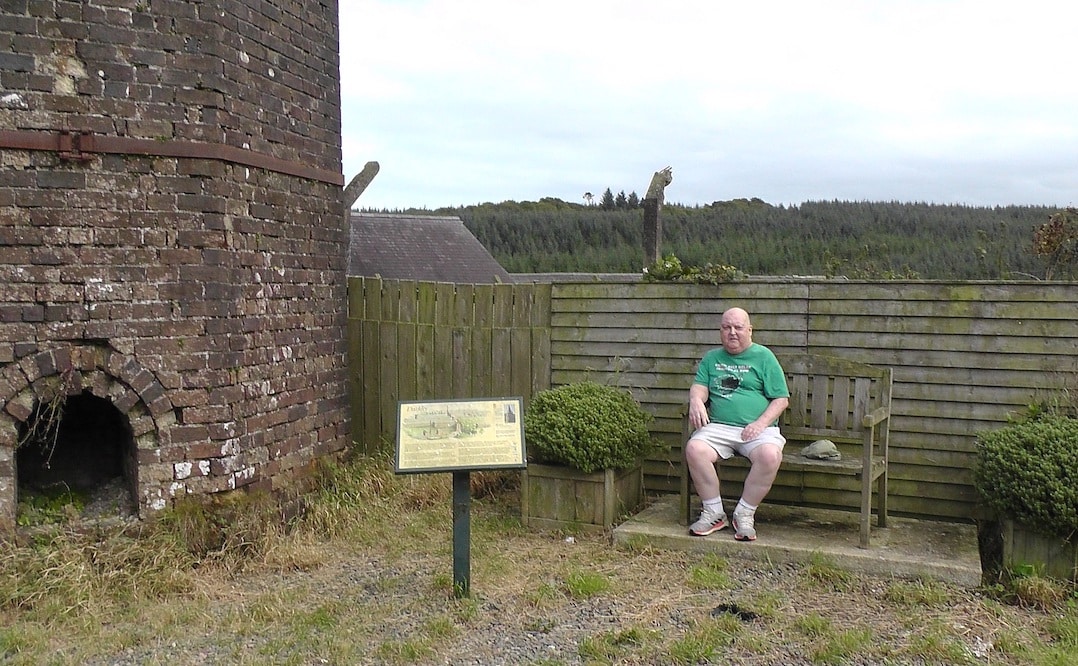
Keady man – and once long-time ex-pat – Sean Davis left the Orchard County in 1980’s for a new life. Like many before him – and after him – the impressionable teenager; a then fresh-faced 18-year-old, opted for the big lights of London.
It would be 35 years later, in 2015, before Sean would return to live back ‘at home’. This was when Sean took an interest in and started to research places local to him.
“I couldn’t believe how little I knew,” he said, which prompted him to set up his website www.aboutarmagh.com – a guide to local archaeology, folklore, and history.
Here is Sean’s story and his long road home, in his own words…
Most reading this will have no recollection of the 1980s. If you did, you wouldn’t have been able to write about it on social media, or use your mobile to discuss it with friends at the time. Though all was not bad. You could have learned to solve “Rubik’s Cube” or brush the hair of “My Little Pony”. By 1982 you even had a choice of four TV channels (BBC1, BBC2, ITV & Channel 4). If people were happier or not then, I can’t say, but I guess they did talk more.
As for me, I remember the 1980s, plus everything then and since, as if it was only yesterday.
In 1980 I sat my A-levels and gained entry to a university in London. I was 18 years old and like many Irish before me, I was on my way to live in another country. However, unlike most, my journey was by choice and not through necessity. I had spent all of my life in Ireland and I wanted to see more. When I was younger, I had two scares where I had come close to losing my life and I was now very aware of the lives being lost due to “The Troubles”.
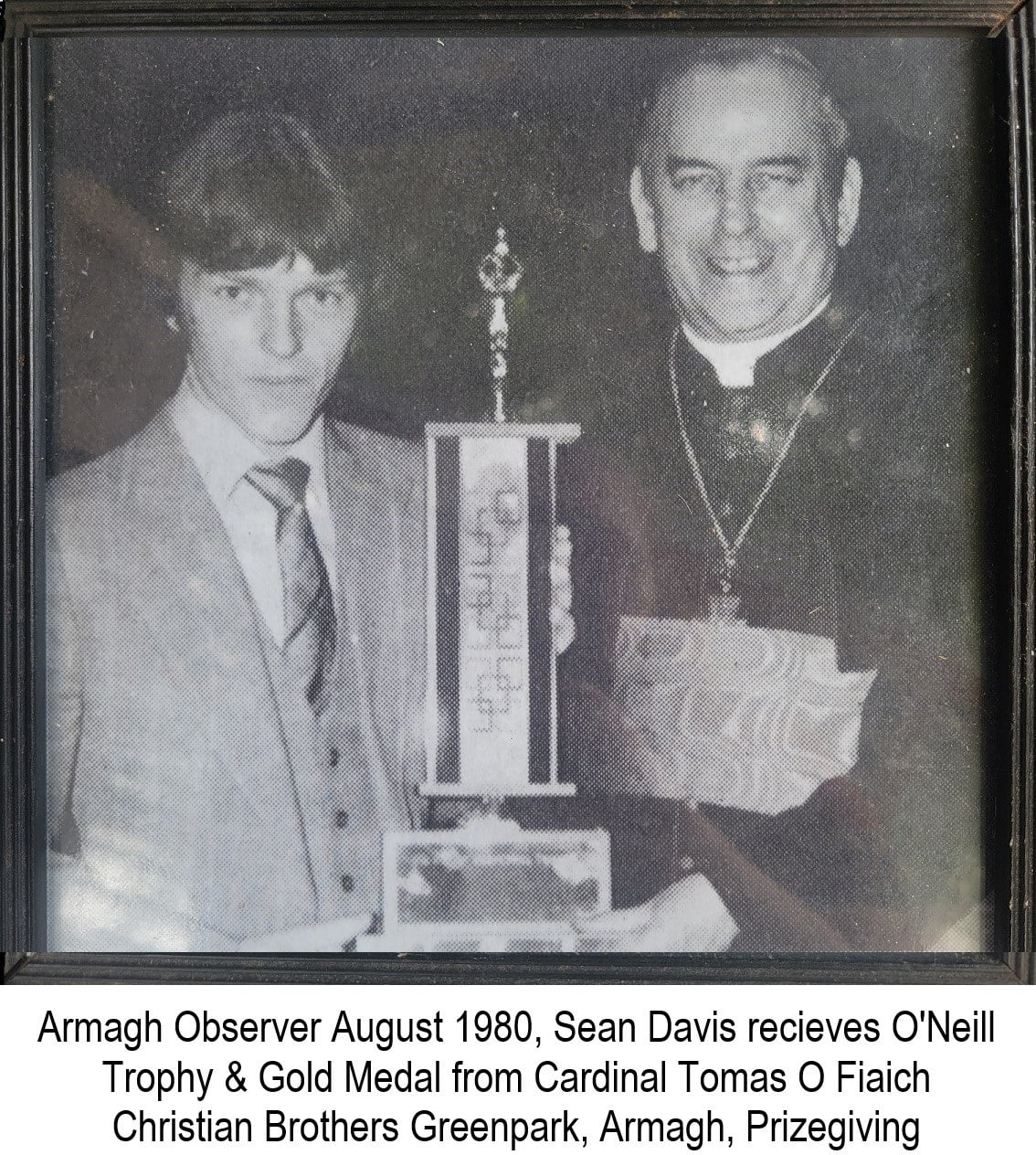
My school was the CBS Grammar School in Armagh City and my A-level subjects were all in Mathematics and Science. These were what I just happened to be good at then. I was completely useless at reading long sentences and books, but numbers were small words to me. I also loved reading maps and studying Geography, but it proved too difficult for my school to add to my already large number of A-levels.
On September 27, 1980, I was on a plane from Belfast International Airport to London Heathrow. The plane was a Hawker Siddeley Trident. Eight years earlier, a similar plane fell out of the sky two minutes after take-off from Heathrow and crashed killing all 118 on-board.
Among those killed were 12 senior businessmen from the Republic of Ireland, including the head of the Confederation of Irish Industry, enroute to Brussels for meetings preparatory to Ireland’s accession to the European Economic Community – a referendum approving Ireland’s entry had been passed in May.
Many years later (c2010), when I worked just 200 yards from the crash site, I would write about it on a website entitled “Staines Historical Walks”.
University in Central London was like living in a bubble, you could choose what to let in and what not to. My planned three-year stay turned into seven and by then I was 25 years old and married.
For the next few years, my wife and I would move west through London and Surrey. Often, when we moved out of an address our deposit, for reasons unknown to us, was not returned. It was only after we moved to a house in Twickenham, we shared with my sister and her husband, with a very pleasant Irish Landlady, that we stopped getting treated as a cash cow.
My sister had recently given up a job in the city to take up hairdressing and also taught Irish dancing at the local church hall. My brother-in-law worked as a tailor in Savile Row and as a musician. The job may sound posh, but tailors in Savile Row usually worked in stuffy sweat shops below the ground.
The above made me think about a few things from earlier in life and how the Irish are known as having the “gift of the gab” and are great at telling and exaggerating stories.
It was whilst living in Twickenham we decided to take up running, a decision which would have a major impact on the rest of my life.
It took time for us to get into the swing of things, and we joined a local running club. I really enjoyed my new found sport and got more involved. My enthusiasm was noticed and within a couple of years I took on the role of men’s captain.
Around this time, we bought a flat and moved to nearby Hampton Wick. My sister and her husband remained in Twickenham for short time, but then moved back to Armagh and bought a house there.
It wasn’t long until we were expecting our first daughter. Emma, was born in 1992 and soon afterwards we moved to a larger house in Long Ditton, Surrey.
In 1994 one of the members of my local running club, The Stragglers, suggested we organise a relay race around London’s Green Belt. I got involved as I had learned about the Green Belt at school, loved reading OS maps, and had really enjoyed taking part in similar races in Wales and Norfolk.
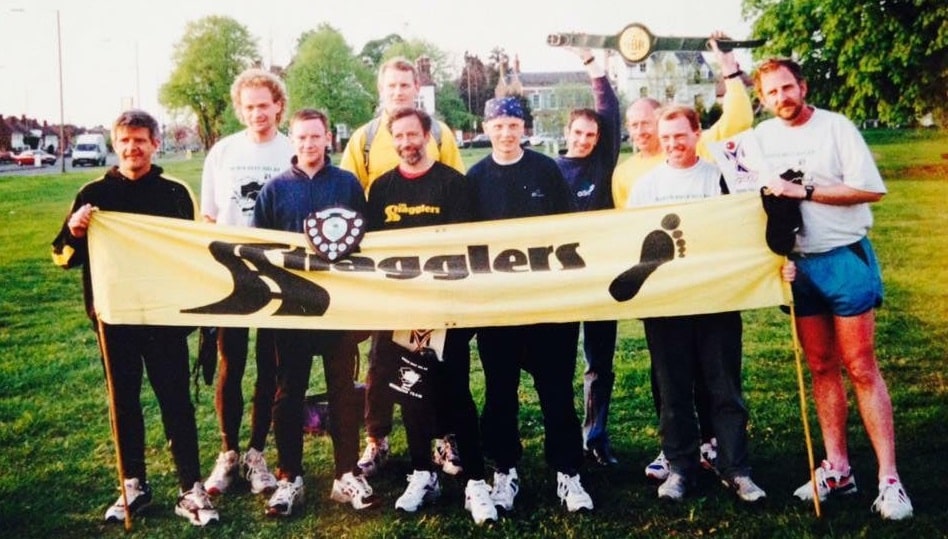
The plan was to create a 200-mile, 20 stages route around London. However, when I saw things weren’t going anywhere, I took the lead. By July 1995 we had a useable route and six willing teams. I help regular meetings with team captains in the run up to the relay. The route was complicated, so for safety reasons I decided to allocate a few marshal/water points to each team. This was a first and it went down like a lead balloon, but it worked, and is still used today. It was just the start of many new things I introduced over the years. The inaugural race didn’t always go to plan, but we had an event.
My journey in creating, organising and taking part in the Green Belt Relay and founding the equivalent Green Belt Way walk was really enjoyable. I loved the story, sharing it with others, the people I met, the friends I made and the company of those who did this journey with me. Also, having both my children involved and taking them out in all weathers for picnics and to educate them about the beauty, the history and nature of the countryside was a bonus for me and a learning curve for them.
By 2012, after having organised the event 17 times over 18 years, I decided it was time to pass the reigns over to others. Between 2014 and 2023 a close friend and his wife have organised the event eight times, maintained the original ethos of the race, but added their own personal touches and have increased the number of teams to over 50 each year.
Today, I look back on what I did as time well-spent and hopefully I have created something for others to enjoy in future. The experience I gained would later help me with similar projects on my return to Ireland.
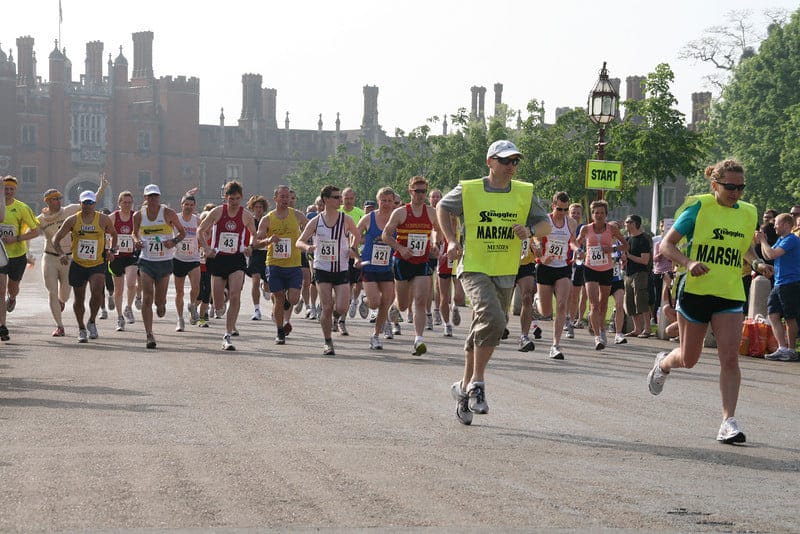
The start from Hampton Court Palace, 2010
In 2015, thirty-five years after I left Ireland, I returned to live in County Armagh. I took an interest in and started to research places local to me. I couldn’t believe how little I knew.
I began to collect information on County Armagh and surrounding areas, but with no real sense of how I would use it.
I soon decided it would be worthwhile to create a local historic walk, similar to those I had already compiled in England.
I came across a “Beetlers’ Trail” information board. This is on an 8.6-mile rural walk around the countryside of my village of Keady. It remembers the importance to the linen industry in the area. I searched the Internet to find out more, but there wasn’t much. However, the information on the board proved really useful and gave me some ideas.
The “Beetlers’ Trail” passes some old mills, but misses out many. I felt it would be good to include them all. I also soon realised there was much more to see: the hills; the lakes; the rivers which powered the mills; the ancient ringforts and enclosures; the megalithic tombs, the glens; the forest trails; etc…
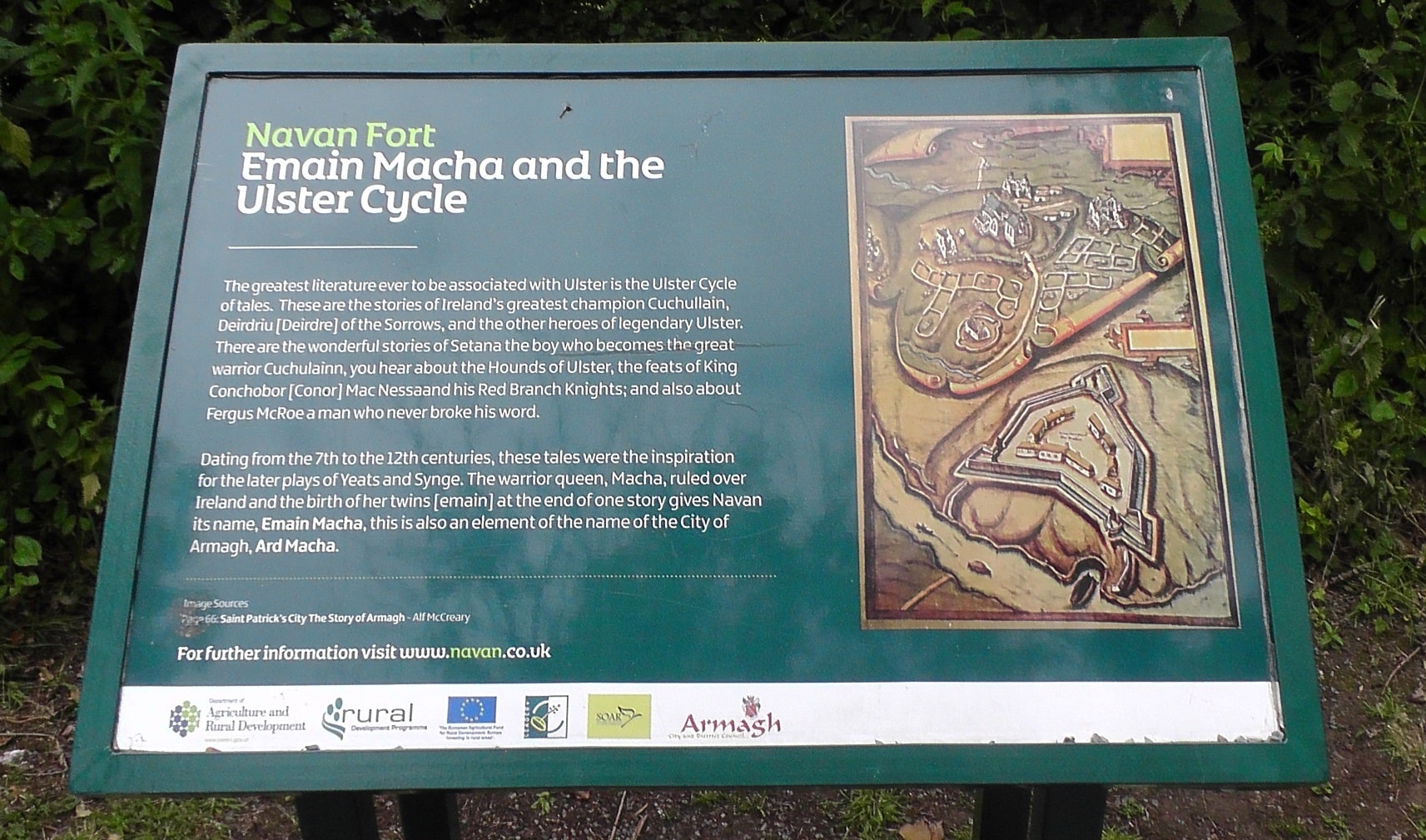
I searched the internet to find out about walking in Northern Ireland. However, everything was very general and vague, unlike England where there is a right to roam and every public footpath is mapped and maintained by local councils who make the records available online.
At the forefront of my mind, was to produce as safe a route as possible. The result was a 21-to-27-mile walk I named “The Keady Hills, Lakes, Rivers and Mills Walk”.
The walk starts and finishes at the Tommy Makem Arts & Community Centre and is divided into three sections. The first two end at bus stops, and from each there’s a 5-minute bus ride back to the start at Keady.
Whilst researching the walk, I came across two papers about an old poem from the Book of Leinster (published 1160). The poem, “An Ancient Poet’s View from Sliabh Fuaid”, is about the poet, who I assume was a monk, reciting some of the things he can see. The papers were an attempt to work out where the he was.

Sean at Aughnagurgan Megalithic Tomb
I decided I would have a go at trying to work out where the poet was – you can read my findings here. They show the poem was more about recounting a version of the History of Ireland and the Irish People from The Book of Invasions, up to the coming of the Gaels, the arrival of Christianity and beyond. The poem, although very old, is probably one of the most incredible pieces of literature ever written. Before this, I knew almost nothing about Mythology, Folklore or Ancient Irish History. I soon learned lots and found it all truly amazing.
So far, we have a walk around the countryside of my local village, plus a monk, on a hill, reciting a poem and trying to confuse us as to his exact position. Yet, the more I read about Armagh, the more I want to tell the Story of Ireland and the Irish People through their connections to the Story of Armagh.

I thought, if a poet can sit on top of a hill, 900 years ago, and tell the history of the Irish people through listing just a few places; then I can tell the Story of Ireland through its most historical city and county.
The website I eventually compiled can be viewed at www.aboutarmagh.com. This contains eight maps of detailed information points. The “base map” has over 2,100 points. Due to the large number, I have divided this into seven sections, Archaeology, Battles, Do & See, Folklore & Stories, Religious Sites, Stay and Walks.
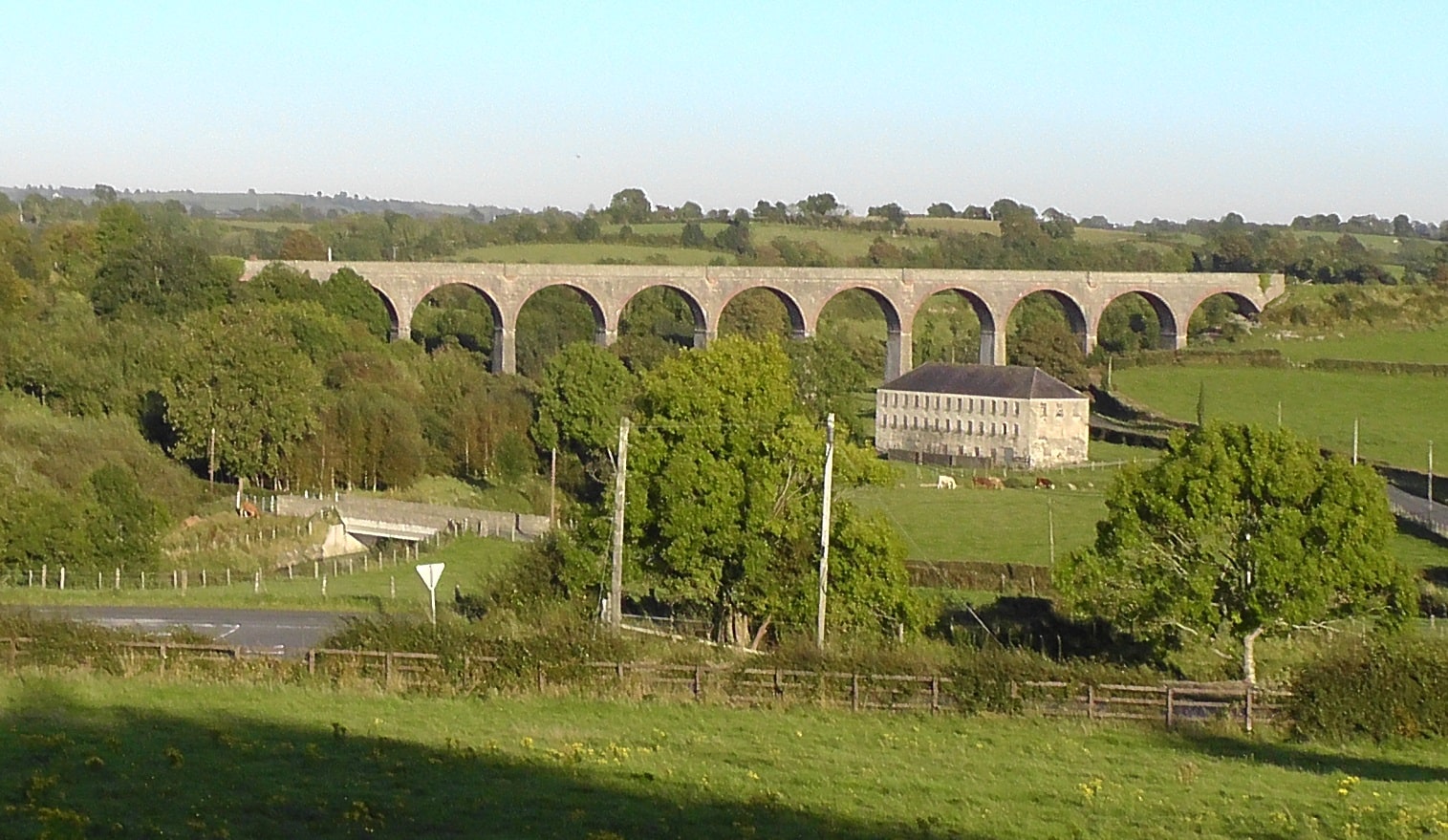
There’s lots to take in and it’s taken me an age to get this far. I hope you have stayed with me and enjoyed reading “About Armagh” and continue to browse and learn about this incredible county. I also hope you, schools, other educational establishments, researchers, etc. use it as a learning and research tool to find out more about this special city and county.
Just a thought: Should the island of Ireland hold a County of Culture, History, Folklore, etc., I believe this, the first of its kind, could greatly help Armagh with its bid. It would be such an asset if other counties compiled similar, thus allowing us to read the stories each have to tell.
Visit www.aboutarmagh.com for more.



